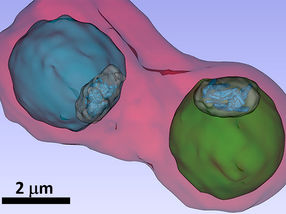Consumers may be wasting more than twice as much food as commonly believed
Consumers are likely wasting much more food than commonly believed, according to a study by Monika van den Bos Verma and colleagues from Wageningen University and Research, The Netherlands, published February 12, 2020 in the open-access journal PLOS ONE. Widely used estimates do not account for effects of affluence on consumer behavior—and affluent consumers waste more food.

symbol image
Schlumpf98/ Pixabay
The Food and Agriculture Organization of the United Nations (FAO) estimated that in 2005, one third of all food available for human consumption was wasted - food that was fit for human consumption but was not eaten. This figure since continues to serve as reference for the extent of global food waste along the food supply chain. Using the FAO estimate of one-third, existing literature calculated a corresponding number in calories – 24 percent of calories were wasted, and eight of the 24 percent was wasted by consumers alone.
How affluence may affect food waste
However, the FAO methodology and therefore the calorie waste estimate based on it, does not factor in consumer behavior regarding food waste; food supply alone determines the extent of food waste. This study is the first to investigate if and how consumer affluence may affect their food waste. Using a human metabolism model and data from FAO, the World Bank, and the World Health Organization, Van den Bos Verma and colleagues quantified the relationship between food waste and consumer affluence. Using this model, they created an international dataset providing estimates of global as well as country specific food waste.
Their results suggest that the eight percent figure is too low and consumers could be responsible for as much as nineteen percent. The authors also found that once consumer affluence reaches a spending threshold of approximately $6.70 per person per day, consumer food waste starts to arise – increasing rapidly with rising affluence at first, and then at much slower rates at higher levels of affluence. This suggests that even in the lower-middle income category, countries on the higher end of spectrum already face a risk of rapid rise in their food waste. Therefore, to achieve low global food waste we need to reduce food waste in high-income countries, and also prevent it from rising rapidly in countries reaching the threshold.
Other attributes and motives
This work relies on FAO's food balance sheet data, which have limitations with regard to their accuracy. Also there are many other consumer attributes and motives beyond affluence, that affect consumer food waste. However, Van den Bos Verma and colleagues believe that the method behind their work can be used as a basis to introduce the affluence elasticity of waste as a new concept in empirical consumption models, to better understand and assess current food waste magnitudes, and to help measure global progress in reducing food waste (SDG 12.3).
Most read news
Other news from the department business & finance

Get the food & beverage industry in your inbox
By submitting this form you agree that LUMITOS AG will send you the newsletter(s) selected above by email. Your data will not be passed on to third parties. Your data will be stored and processed in accordance with our data protection regulations. LUMITOS may contact you by email for the purpose of advertising or market and opinion surveys. You can revoke your consent at any time without giving reasons to LUMITOS AG, Ernst-Augustin-Str. 2, 12489 Berlin, Germany or by e-mail at revoke@lumitos.com with effect for the future. In addition, each email contains a link to unsubscribe from the corresponding newsletter.





















































